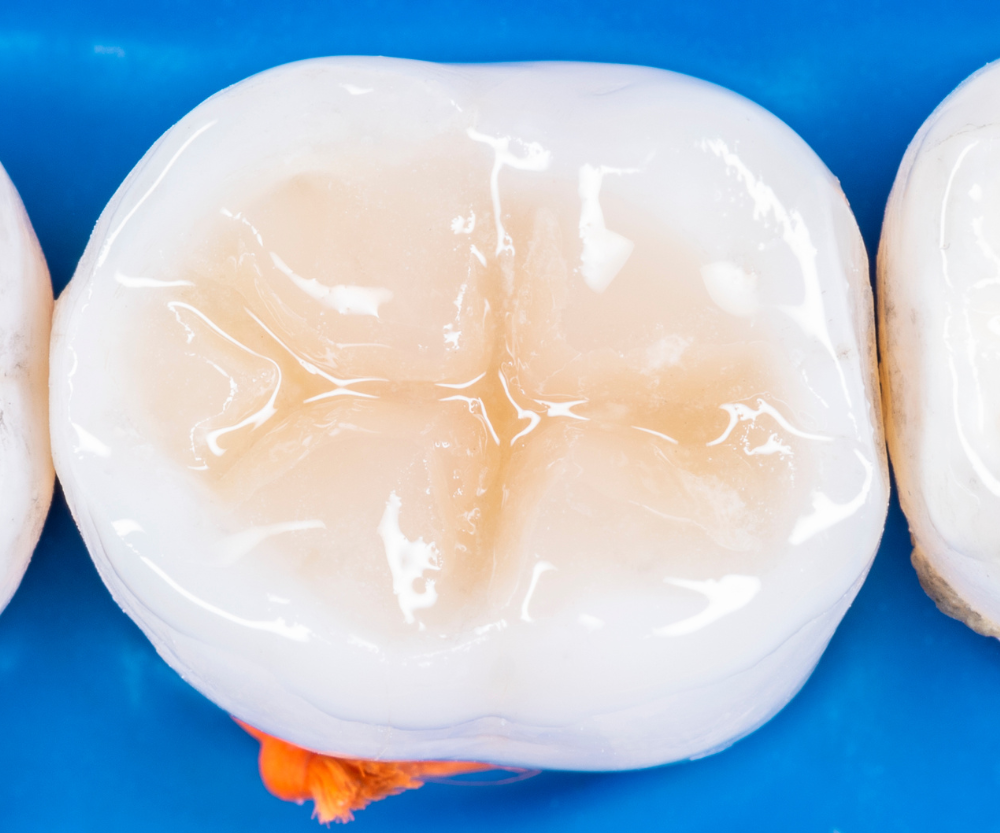 Introduction
Introduction
Attention West Hempstead & Garden City Residents: As a parent, you always want the best for your child, and that includes their dental health. When it comes to treating cavities, the type of filling material used can make a big difference in both the health of your child’s teeth and the appearance of their smile. At Platinum Pediatric Dentistry, we understand that choosing the right filling is crucial, which is why we recommend white fillings—also known as composite fillings—as a safe, effective, and aesthetically pleasing option for treating cavities in children.
In this blog post, we’ll explore what white fillings are, their benefits compared to traditional metal fillings, and why they are an ideal choice for children. We’ll also discuss the procedure for placing white fillings, what to expect afterward, and how to care for your child’s teeth following treatment.
What Are White Fillings?
White fillings, also known as composite resin fillings, are made from a mixture of plastic and fine glass particles. This material is tooth-colored, allowing it to blend seamlessly with the natural color of your child’s teeth. Unlike traditional metal (amalgam) fillings, which are silver or gray in color, white fillings are virtually invisible, making them an excellent option for both front and back teeth.
Composite resin is not only aesthetically pleasing but also highly durable. It bonds directly to the tooth structure, providing a strong and stable restoration that can withstand the pressures of chewing. This makes white fillings a versatile solution for treating cavities of all sizes, from small, early-stage decay to larger areas of damage.
Benefits of White Fillings Over Metal Fillings
There are several advantages to choosing white fillings over traditional metal fillings, particularly for children:
-
Aesthetic Appeal: The most obvious benefit of white fillings is their natural appearance. Because they are color-matched to your child’s teeth, white fillings are virtually undetectable when they smile, talk, or eat. This can be especially important for older children and teenagers who are concerned about the appearance of their teeth.
-
Bonding Strength: White fillings bond directly to the tooth, providing additional support and reinforcing the tooth’s structure. This bonding process helps to prevent the filling from dislodging and reduces the risk of the tooth cracking or breaking in the future.
-
Minimally Invasive: Because composite resin adheres directly to the tooth, less healthy tooth structure needs to be removed compared to metal fillings. This means that the dentist can preserve more of your child’s natural tooth, leading to a longer-lasting and more durable restoration.
-
Mercury-Free: Traditional metal fillings contain mercury, which can be a concern for some parents. While the amount of mercury in amalgam fillings is generally considered safe, many people prefer to avoid it altogether. White fillings are completely mercury-free, offering peace of mind to parents who are concerned about potential health risks.
-
Versatility: White fillings can be used to treat cavities in both the front and back teeth. They are also effective for repairing chipped or broken teeth, making them a versatile option for a variety of dental issues.
The Procedure: How White Fillings Are Placed
The process of placing a white filling is straightforward and typically takes just one visit to the dentist. Here’s what you can expect during your child’s appointment:
-
Examination and Diagnosis: First, the dentist will examine your child’s teeth to determine the extent of the decay and whether a white filling is the appropriate treatment. X-rays may be taken to get a clear view of the tooth and surrounding structures.
-
Local Anesthesia: To ensure your child’s comfort, the dentist will numb the area around the affected tooth with a local anesthetic. This will prevent any pain or discomfort during the procedure.
-
Decay Removal: Once the area is numb, the dentist will carefully remove the decayed portion of the tooth. This step is crucial to prevent the decay from spreading and to prepare the tooth for the filling.
-
Tooth Preparation: After the decay has been removed, the dentist will prepare the tooth for the filling by cleaning it thoroughly and applying a special adhesive. This adhesive helps the composite resin bond securely to the tooth.
-
Filling Placement: The dentist will then apply the composite resin in layers, using a special light to harden each layer as it is applied. This layering process ensures that the filling is strong and durable.
-
Shaping and Polishing: Once the filling has been placed, the dentist will shape it to match the natural contours of your child’s tooth. The filling will then be polished to give it a smooth, natural appearance and to prevent staining.
-
Final Check: Finally, the dentist will check the filling to ensure it is properly aligned with the bite and that your child is comfortable. Any necessary adjustments will be made to ensure the filling fits perfectly.
What to Expect After the Procedure
After the white filling has been placed, your child may experience some minor sensitivity to hot or cold foods and beverages. This is normal and should subside within a few days. In the meantime, it’s important to avoid chewing on hard foods or using the treated tooth for biting until the filling has fully set and any numbness has worn off.
Your child should continue with their regular oral hygiene routine, including brushing twice a day and flossing daily. It’s important to keep the area around the filling clean to prevent further decay and to maintain the health of the tooth.
Caring for White Fillings
White fillings are durable, but they do require proper care to ensure they last as long as possible. Here are some tips for maintaining your child’s fillings:
-
Good Oral Hygiene: Encourage your child to brush their teeth twice a day with fluoride toothpaste and to floss daily. This will help to prevent plaque buildup and reduce the risk of new cavities forming around the filling.
-
Regular Dental Check-Ups: Schedule regular check-ups and cleanings with Platinum Pediatric Dentistry. During these visits, we will check the condition of the fillings and ensure they are still intact and functioning properly.
-
Avoid Hard Foods: While white fillings are strong, they can still be damaged by excessive force. Encourage your child to avoid chewing on hard foods, ice, or non-food items like pens or fingernails.
-
Address Bruxism: If your child has a habit of grinding or clenching their teeth (a condition known as bruxism), let the dentist know. Bruxism can put excessive pressure on fillings and cause them to wear down or crack over time. A custom mouthguard may be recommended to protect your child’s teeth while they sleep.
-
Monitor for Changes: Keep an eye out for any changes in your child’s fillings, such as rough edges, cracks, or sensitivity. If you notice any issues, schedule an appointment with us right away so we can address the problem before it worsens.
The Longevity of White Fillings
With proper care, white fillings can last many years. However, they are not as durable as metal fillings and may need to be replaced eventually. The longevity of a white filling depends on several factors, including the size and location of the filling, your child’s oral hygiene habits, and their overall dental health.
On average, white fillings can last between 5 to 7 years, but many can last much longer with good care. Regular dental check-ups are essential to monitor the condition of the fillings and to catch any issues early.
Choosing White Fillings for Your Child
At Platinum Pediatric Dentistry, we believe that white fillings are the best choice for treating cavities in children. Their natural appearance, strong bonding capabilities, and safety make them an ideal option for maintaining your child’s oral health while preserving the beauty of their smile.
If your child has a cavity or needs a filling replaced, we encourage you to consider white fillings as a safe, effective, and aesthetically pleasing solution. Our team is here to answer any questions you may have and to guide you through the process, ensuring that your child receives the best possible care.
Conclusion
White fillings offer a multitude of benefits over traditional metal fillings, particularly for children. They not only provide a strong and durable solution for treating cavities, but they also preserve the natural appearance of your child’s teeth. At Platinum Pediatric Dentistry, serving West Hempstead and Garden City, we are committed to using the latest dental technologies and materials to ensure your child’s smile remains healthy and beautiful.
For more information about white fillings and other pediatric dental services, visit us at www.platinumpediatricdentistry.com. We also recommend exploring the resources provided by the American Dental Association (ADA) (https://www.ada.org) and the American Academy of Pediatric Dentistry (AAPD) (https://www.aapd.org) to learn more about cavity treatment options for children.
Q & A Summary: White Fillings for Kids
Q: What are white fillings?
A: White fillings, also known as composite fillings, are tooth-colored restorations made from a mixture of plastic and fine glass particles. They blend seamlessly with natural teeth and are used to treat cavities.
A: White fillings, also known as composite fillings, are tooth-colored restorations made from a mixture of plastic and fine glass particles. They blend seamlessly with natural teeth and are used to treat cavities.
Q: Why are white fillings better than metal fillings for children?
A: White fillings are more aesthetic, bonding directly to the tooth for added strength. They require less removal of healthy tooth structure, are mercury-free, and are ideal for both front and back teeth.
A: White fillings are more aesthetic, bonding directly to the tooth for added strength. They require less removal of healthy tooth structure, are mercury-free, and are ideal for both front and back teeth.
Q: How long do white fillings last?
A: With proper care, white fillings typically last between 5 to 7 years, though many can last longer with good oral hygiene and regular dental check-ups.
A: With proper care, white fillings typically last between 5 to 7 years, though many can last longer with good oral hygiene and regular dental check-ups.
Q: Are white fillings safe for children?
A: Yes, white fillings are safe and effective for treating cavities in children, providing a strong, natural-looking solution without the need for mercury.
A: Yes, white fillings are safe and effective for treating cavities in children, providing a strong, natural-looking solution without the need for mercury.
Q: How are white fillings placed?
A: The dentist removes the decay, cleans the tooth, and applies the composite resin in layers, hardening each with a special light. The filling is then shaped and polished to match the tooth’s natural contour.
A: The dentist removes the decay, cleans the tooth, and applies the composite resin in layers, hardening each with a special light. The filling is then shaped and polished to match the tooth’s natural contour.
Contact Platinum Pediatric Dentistry today to schedule an appointment and learn more about how white fillings can benefit your child’s smile.
8/27/24
Dr. Dan Bamshad
Dr. Dan Bamshad
